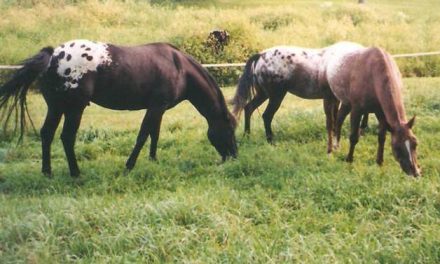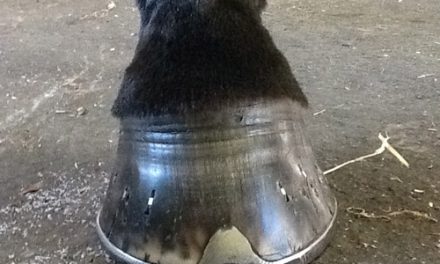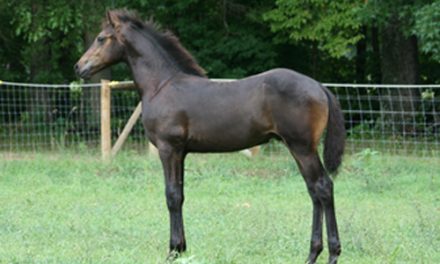The Way of Horses
 Drought tolerant, prevents erosion, easy to establish, quick recovery after grazing, hardy, resistant to disease and insects—sounds perfect, but tall fescue is not!
Drought tolerant, prevents erosion, easy to establish, quick recovery after grazing, hardy, resistant to disease and insects—sounds perfect, but tall fescue is not!
For broodmares it can be very dangerous! Yet it is everywhere.
Tall fescue is one of the most widespread-grasses grown in the United States. More than 35 million acres are planted or contaminated (depending on your point of view) with tall fescue.
There are many varieties of fescue. The oldest and most popular is called Kentucky 31. It was “discovered” in 1931 by Dr. E.N. Fergus of the University of Kentucky. Dr. Fergus noticed green grass growing on a steep hillside during a drought. He gathered seed, conducted trials and initiated reproduction of the variety.
Kentucky 31 tall fescue was promoted as cool-season forage that would grow just about anywhere. Its popularity and usage spread quickly.
But then problems started to become apparent. Cattle grazing on the tall fescue developed lameness, their hooves and tails sloughed off and they didn’t thrive. Broodmares eating tall fescue were having trouble foaling, delivering dead or weak foals, not producing milk and were difficult to get rebred.
It took years to determine what was causing the illnesses.
It wasn’t until the1970’s that researchers discovered tall fescue was infected by a fungus called an endophyte (“endo” meaning “within”; “phyte” meaning “plant”). It cannot be seen on the outside of the plant.
The endophyte fungus makes the tall fescue resistant to insects and disease. It makes the plant hardy; but take away the fungus and the plant becomes weak. The very thing that makes the plant desirable is making animals sick.
It has not been proven how the fungus causes problems in broodmares. It is thought the fungus lowers hormone levels, resulting in prolonged gestation rates (length of pregnancy), thick placentas (the sac in which the gestating foal develops inside the mare), weak or dead foals, retained placentas, lack of colostrum/milk production and difficulty getting the mare back in foal. (Tall fescue is safe to feed to horses other than broodmares.)
Luckily removing the broodmare from infected pasture and not feeding infected fescue hay during the last 90 days of gestation can help prevent fescue toxicity.
If it is discovered the mare has been eating tall fescue, immediately remove the forage and substitute it with another type of forage; drugs are available to help counteract the toxin. Contact your veterinarian.
It is imperative someone assists during the foaling. The attendant should be prepared to cut the placenta should it be too thick. Consult your veterinarian for instructions. The veterinarian should be on call.
A source of colostrum, milk replacer or a nurse mare should be located in advance should the dam not produce enough colostrum or milk for the foal. Taking a “wait and see” attitude puts the foal’s life at risk.
Contact your local agricultural extension service for help identifying the types of forage in your pasture or hay. Tall fescue can be tested for the endophyte fungus, but it must be tested when the plant is actively growing. Testing the hay will not work…it must be tested before the grass is mowed. The ag-extension service can assist in getting the forage tested.
Broodmare managers must also be aware that tall fescue is a popular grass for lawns. Do not allow broodmares to graze in the yard or to eat lawn clippings (which should not be fed anyway – to any horse) during the last three months of gestation.
Increase your odds of raising a healthy foal by avoiding tall fescue. The benefits aren’t worth the risk.
* For information about caring for and feeding horses take the online courses “Stable Management” and “Nutrition for Performance Horses” taught by Eleanor Blazer. Earn certification or work toward a Bachelor of Science degree in equine studies. Go to www.horsecoursesonline.com for more information. Visit Eleanor’s web site at www.thewayofhorses.com





